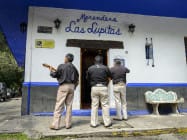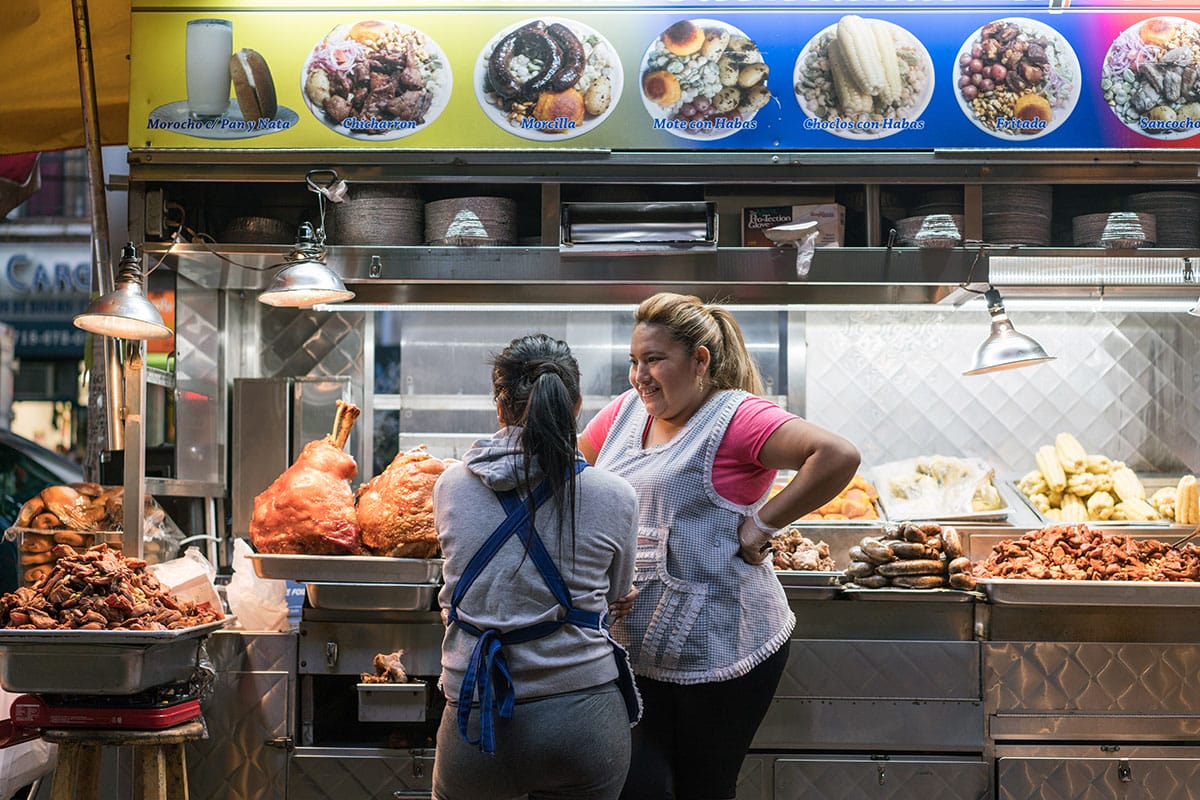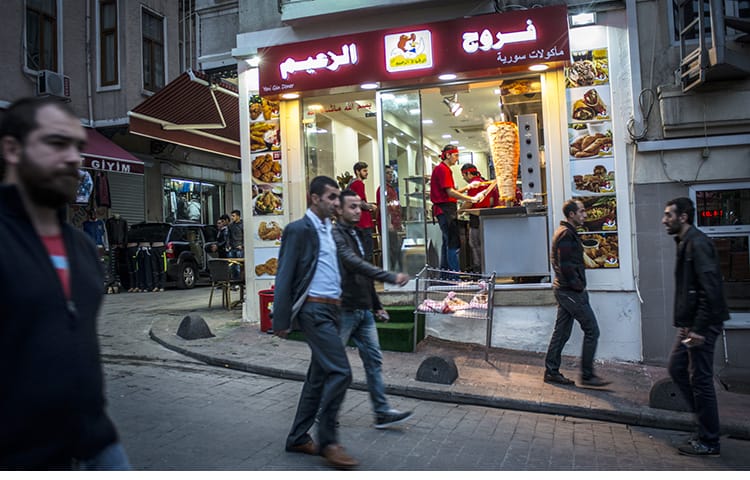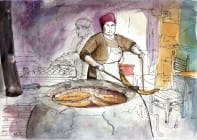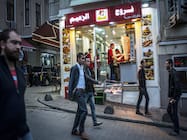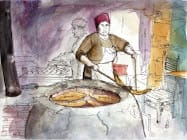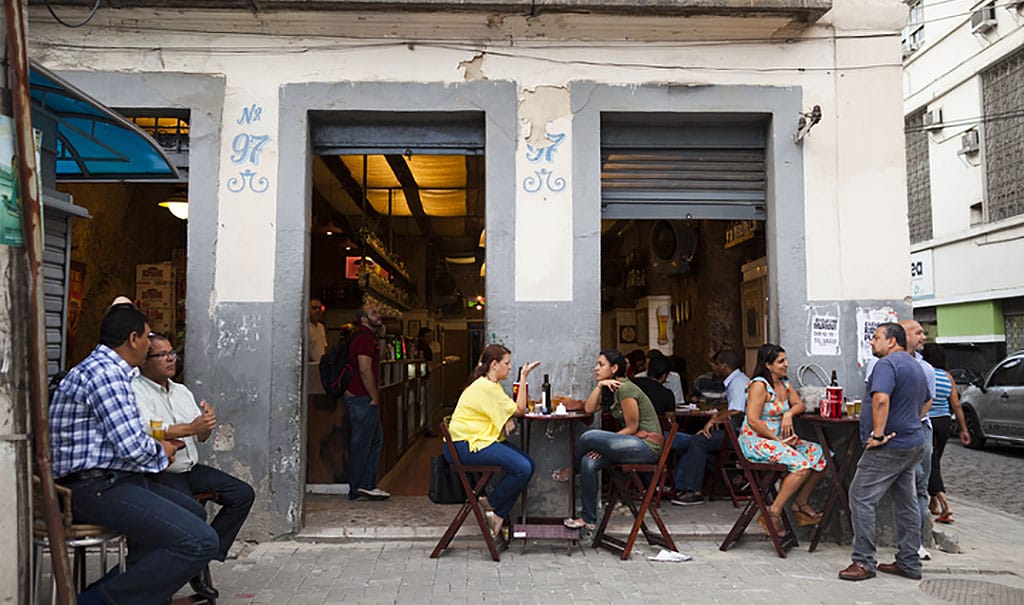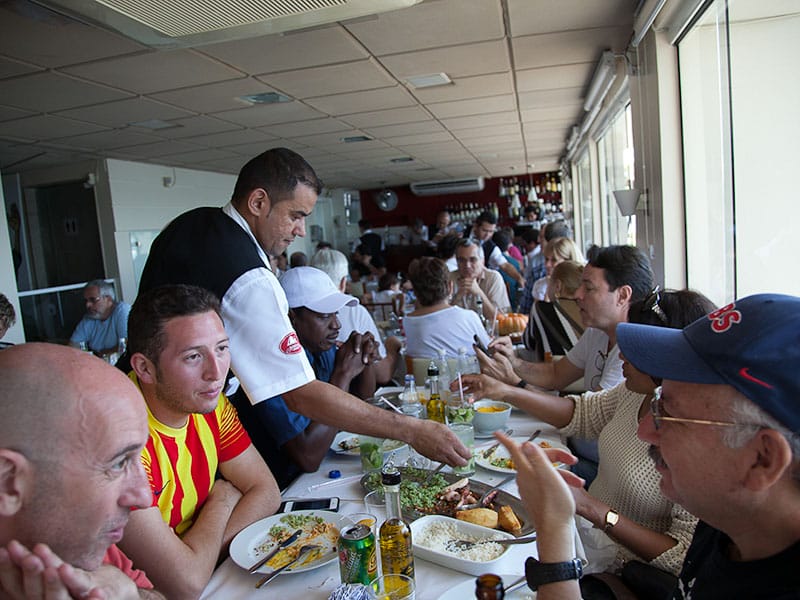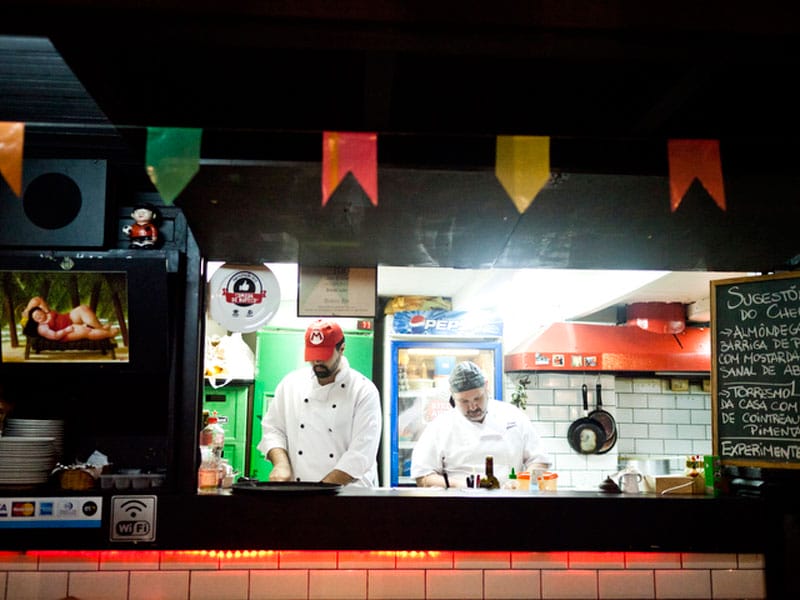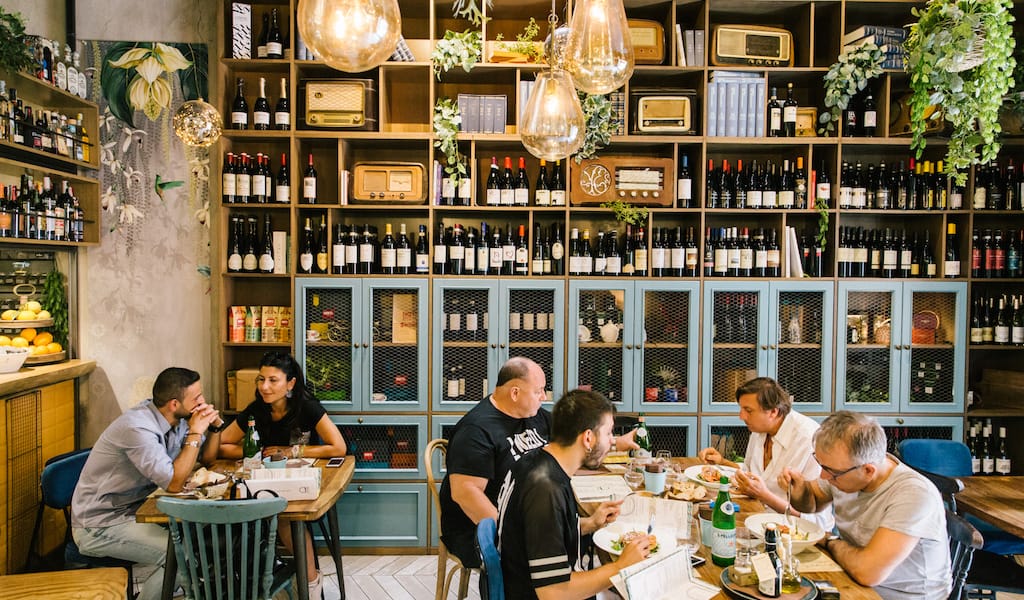Rio’s Port Zone is undergoing a major facelift, and whether that will nicely polish its tired face or look like a botched Botox job remains to be seen. The port is the heart of Rio Antigo and particularly central to Afro-Brazilian history. It’s home to Rio’s first favela (squatter settlement), called Providência, which was originally populated in 1897 by veterans of the War of Canudos who were told the government would provide housing when they returned to Rio and found those promises to be delayed and elusive. At this port, up to an estimated half million slaves walked in from Brazil’s shores to then be sold in the port’s slave market, treated in a hospital if they were sick or buried if they died after arrival in Gamboa, where a fascinating makeshift museum called the Cemitério dos Pretos Novos offers a view of the human bones a homeowner found while digging on her property.
Brazil received a larger number of African slaves than even the United States, taking in an estimated 35 to 40 percent of the transatlantic slave trade. That makes Brazil today the largest country of Afro-descendants outside of Nigeria. Brazil’s most recent census revealed the country to now be “majority minority,” as the number of respondents who identified as black rose and whites made up fewer than 50 percent of the population.
Although the port is Rio’s oldest center, as commerce in the colonial era was focused along the Guanabara Bay, tourists now breeze past it on their way to the beaches of Copacabana and Ipanema. Those condo-filled neigh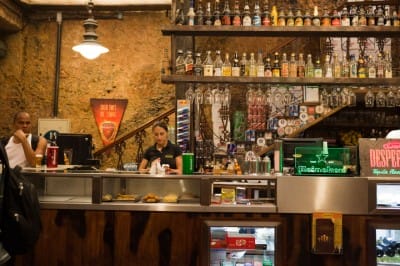 borhoods only began to be built up in the 20th century. The port zone’s charm, in the meantime, went hidden under a layer of bus fumes and pichação, Brazil’s characteristic scribbly graffiti.
borhoods only began to be built up in the 20th century. The port zone’s charm, in the meantime, went hidden under a layer of bus fumes and pichação, Brazil’s characteristic scribbly graffiti.
In the midst of real-estate speculation of Olympic proportions and intent on making Rio into a “global city,” the city government has turned its attention to the Port Zone. They see it as a centrally located area that can be developed, adding commercial space so that Rio can avoid western sprawl into Barra, the Miami-like region of shopping malls and gated communities. Skeptics say that the city is selling the Port Zone’s charming face to developers while pushing its old-timer residents out through gentrification. This is literally the case in Providência, where the government is forcibly removing residents using a variety of excuses.
Gracioso finds itself in the middle of the tug between old and new. The corner bar is situated within earshot of the famous outdoor samba at Pedra do Sal, called “Salt Rock” because slaves once unloaded salt shipments there and now considered the birthplace of the characteristic Rio beat. Behind it is the Morro da Conceição, a charming cobblestone neighborhood of colorful homes, where working-class residents now complain that rents are being increased by having a digit added on to them.
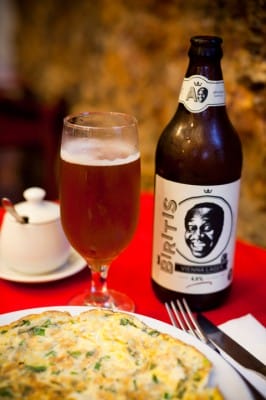 Gracioso (“full of grace,” used in the religion-infused Lusophone tongue to mean anything that is lovely or nice) served the cargo and shipping manual laborer crowd in its more than 100 years of existence. Then it caught fire in 2011, the wood structure burning down to its naked tile-and-brick walls and killing a night guard who was on the top floor. It closed for a year and a half, reopening this April with an approach to historical restoration that the city government would do well to take note of. Original slabs of the rare woods peroba rosa and peroba do campo were repurposed to make the bar, where black char pays tribute to the accident. Owner Consentino Iglesias decided he liked the mix of exposed brick walls with the ones whose white tiles remained intact after the fire, and let them stand together. Saloon-style, waist-high doors mean the sounds of Monday and Friday after-work sambas at Pedra do Sal drift through Gracioso and bring diners the sounds of Rio Antigo.
Gracioso (“full of grace,” used in the religion-infused Lusophone tongue to mean anything that is lovely or nice) served the cargo and shipping manual laborer crowd in its more than 100 years of existence. Then it caught fire in 2011, the wood structure burning down to its naked tile-and-brick walls and killing a night guard who was on the top floor. It closed for a year and a half, reopening this April with an approach to historical restoration that the city government would do well to take note of. Original slabs of the rare woods peroba rosa and peroba do campo were repurposed to make the bar, where black char pays tribute to the accident. Owner Consentino Iglesias decided he liked the mix of exposed brick walls with the ones whose white tiles remained intact after the fire, and let them stand together. Saloon-style, waist-high doors mean the sounds of Monday and Friday after-work sambas at Pedra do Sal drift through Gracioso and bring diners the sounds of Rio Antigo.
At Gracioso, Port Zone workers gobble up hefty portions of hearty Brazilian favorites, such as stewed bacalhau (salt cod), squid with broccoli and rice, stewed lamb in paprika sauce, oxtail with polenta and watercress and feijoada with pork for lunch. The tasty fritadas – omelets, more or less – are also a good option, with simple yet flavorful fillings like parsley and onion.
In the evening, the beer menu and bolinhos, fist-sized fried nibbles, are the main attraction. For drinking, we suggest ordering a bottle of Biritis for novelty’s sake and a moment of cultural reflection, in the form of the grinning mug emblazoned on the bottle’s label and cap. The smiling face belongs to the Afro-Brazilian TV comedian Mussum, who was on a show called “Os Trapalhões” that started in the 1970s. He’s still a dear reference to contemporary Brazilians for his exaggeratedly lerdo (mentally slow) and silly ways and for speaking Portuguese incorrectly. Mussum died in 1994, but he still makes the rounds on Brazilian social media memes and Instagrams. His children bought the Biritis brand and posthumously made him the beer’s pitchman earlier this year, which they say is both a marketing scheme and an homage to their father.
The bar also offers Velhas Virgins, or Old Virgins, an extra-light witbier from São Paulo and a good chaser for Gracioso’s top-notch bolinhos. The croquete gracioso is like a bolinho but made of corn rather than wheat and is filled with white cheese and shrimp. The brasileirinha is yet another version that includes an unusual ingredient – brown rather than bl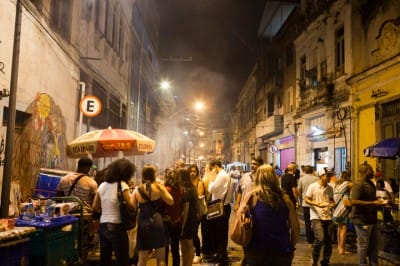 ack beans – and is then stuffed with dried beef strips, salty white cheese and bacon and fried with shaved pig skin.
ack beans – and is then stuffed with dried beef strips, salty white cheese and bacon and fried with shaved pig skin.
While Iglesias says the idea to clean up the Port Zone is good, he’s worried about the motives of officials behind the project. “There’s a lot of promises. But there are promises from politicians. We stand with one foot behind us.” He uses the Portuguese phrase to mean that one is cautious. He complains loudly to a client that rents in the area are already so high that the thriving center of bars and restaurants he had hoped would grow up here has not materialized. “It’s so expensive it’s prohibitive.”
(photos by Lianne Milton)
 October 9, 2013 Bar Urca
October 9, 2013 Bar Urca
In a city with no shortage of postcard views, Bar Urca’s may get the title for most […] Posted in Rio July 23, 2013 Botero
July 23, 2013 Botero
Rio’s Mercado São José looks all but abandoned during the day. The windowless white […] Posted in Rio August 9, 2019 Cisterna Cafè & Bistrot
August 9, 2019 Cisterna Cafè & Bistrot
The typical Neapolitan breakfast is fast, often consumed standing at the espresso bar. A […] Posted in Naples
Published on November 15, 2013
Related stories
October 9, 2013
RioIn a city with no shortage of postcard views, Bar Urca’s may get the title for most picturesque. The eponymous residential neighborhood where the bar is located faces Guanabara Bay, where a colorwheel of boats and yachts bobble on the slow waves leading up to the seawall. Across the bay, the iconic Christ statue watches…
July 23, 2013
RioRio’s Mercado São José looks all but abandoned during the day. The windowless white building with blue trim hosts a small fruit vendor and a thrift shop during work hours. A band practices capoeira – Brazilian martial arts – occasionally on the weekends. But the market bursts with chatter and merrymaking in the evening, thanks…
Explore the city’s coffee bars and cafès on our Naples walk!
August 9, 2019
NaplesThe typical Neapolitan breakfast is fast, often consumed standing at the espresso bar. A croissant and a quick coffee – and, boom, the day begins. Many people in the English-speaking world, however, will use coffee bars and cafès as a place to relax or work. They bring computers, connect to the Wi-Fi and, ordering just…




















